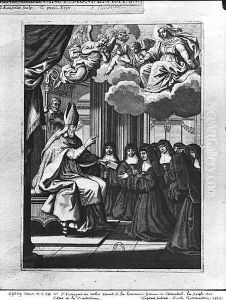Gilles Rousselet Paintings
Gilles Rousselet was a prominent French engraver and draftsman, born in Paris in 1610. His work is notable for its technical skill and the way it reflects the artistic trends and cultural ethos of 17th-century France. Rousselet's engravings offered a crucial means for disseminating the works of leading painters of his time, making art accessible to a broader audience and playing a key role in the spread of the Baroque style across Europe.
Rousselet apprenticed under the engraver Philippe de Champaigne, which grounded his work in the French Baroque tradition. He was adept at translating the grandeur and emotional intensity of Baroque painting into the detailed and precise medium of engraving. Over his career, Rousselet produced engravings after the works of renowned artists such as Nicolas Poussin, Peter Paul Rubens, and Annibale Carracci. His engravings not only replicated the masterworks of these artists but also interpreted them, adding a layer of accessibility and understanding for contemporary and future audiences.
Rousselet's contribution to the arts was recognized by his admission to the Royal Academy of Painting and Sculpture in 1663, an acknowledgment of his skill and impact on French art. His engravings were highly sought after by collectors and connoisseurs, contributing to the spread of French artistic taste and the Baroque style throughout Europe. Rousselet's work embodies the intersection of technical mastery and artistic vision, making him a key figure in the history of French engraving.
He died in 1686, leaving behind a legacy that not only includes his own creations but also his role in preserving and disseminating the masterpieces of the Baroque period. Through his engravings, Gilles Rousselet played a crucial role in the cultural exchange and artistic dialogue of 17th-century Europe, making him an important figure in the history of art.
